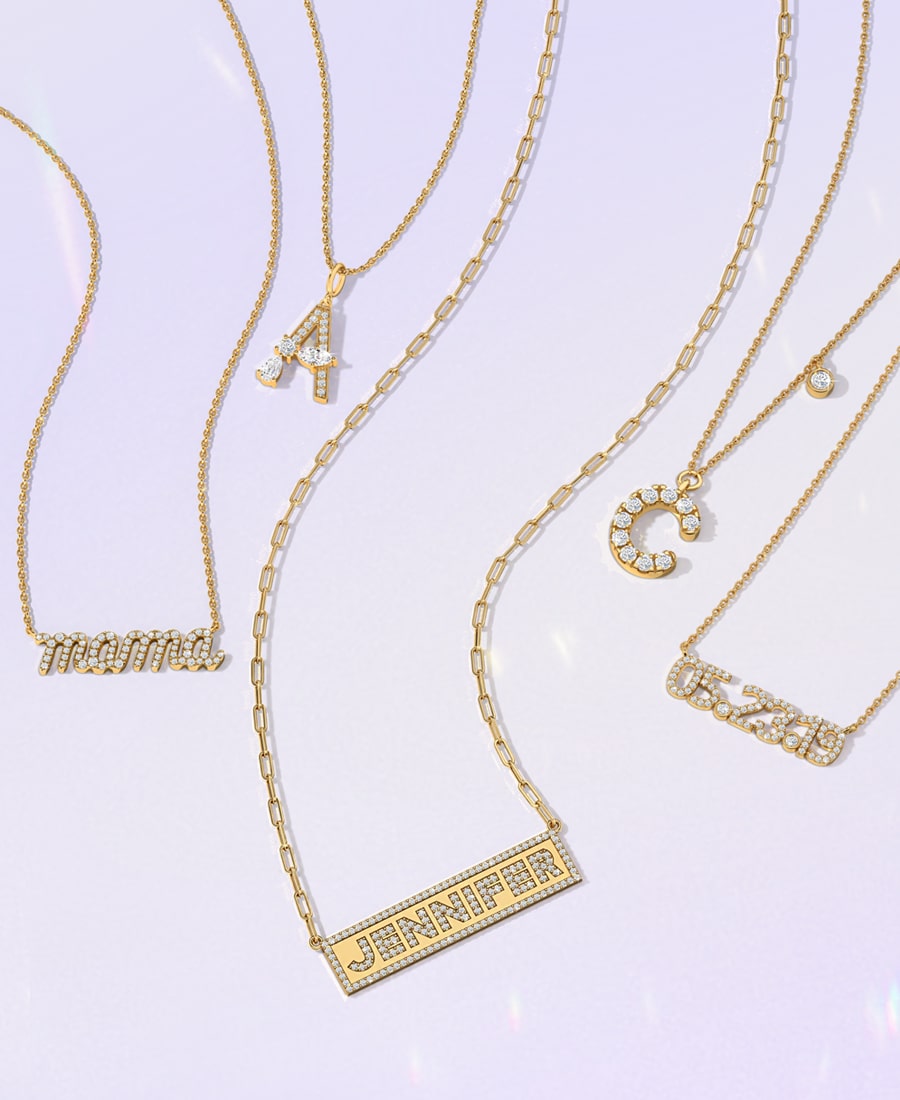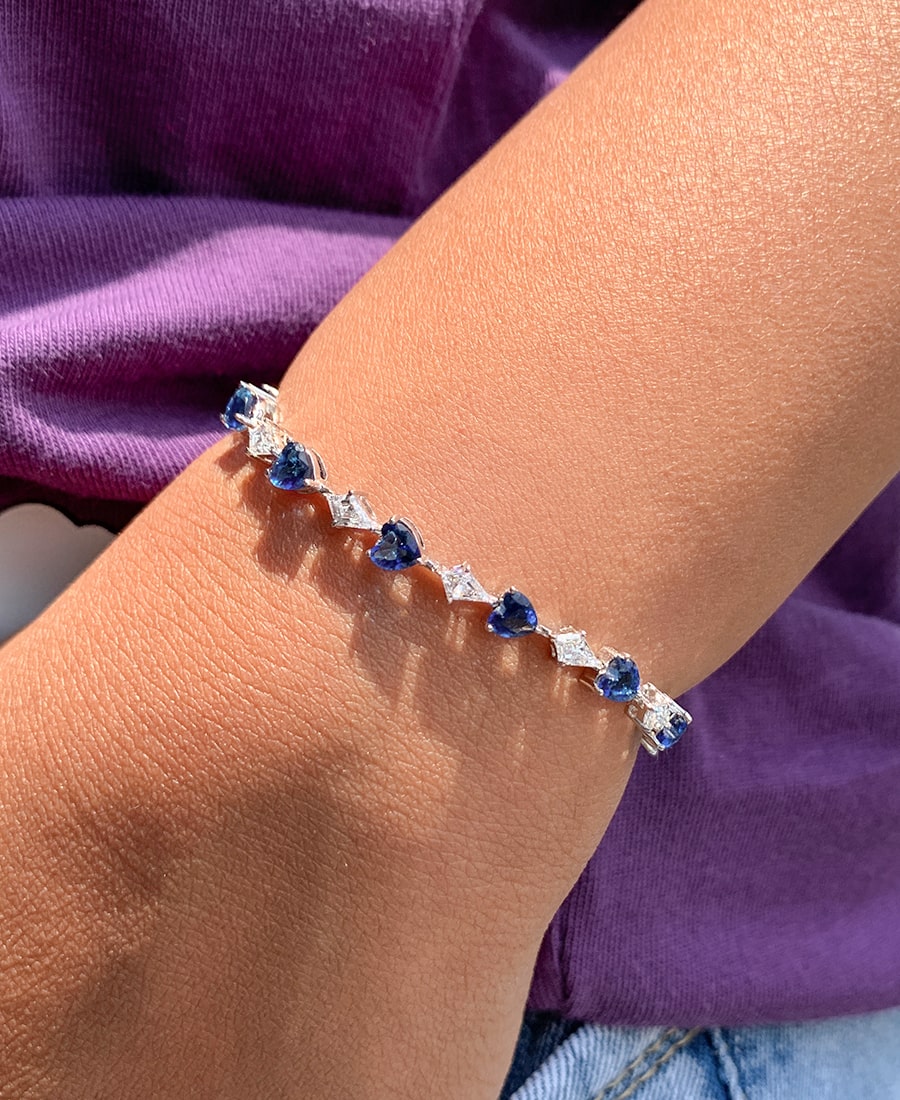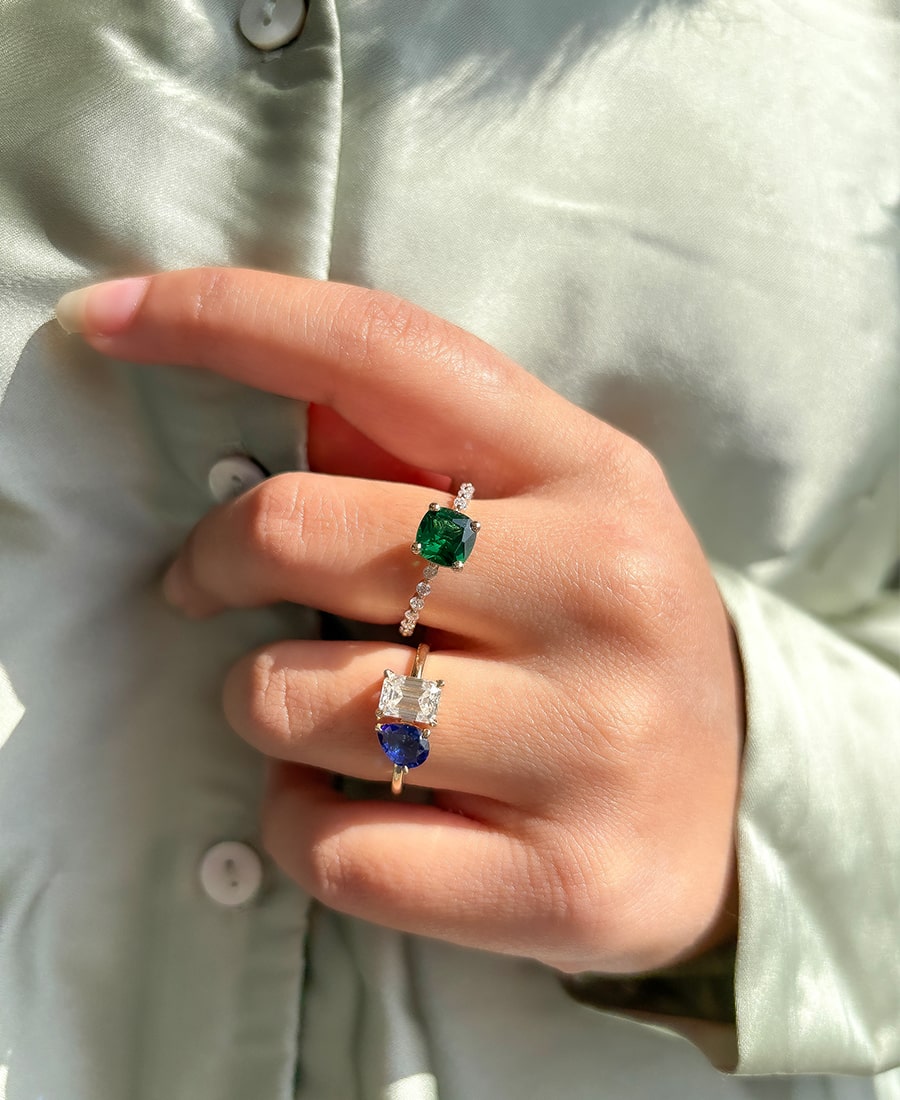
What is the Mohs scale of hardness for gemstones?
Diamonds are known for being incredibly durable, right? But when we talk about their toughness, we're asking how resistant they are to being scratched or damaged. To figure this out, we use something called the Mohs Hardness Scale. It's like a ruler for minerals, showing us how easily a mineral can scratch another. So, when we say diamonds are high on the Mohs scale, it means they're really tough to scratch compared to other minerals. Does it make sense?
Key Takeaways
|
What is the Mohs Hardness Scale?
Imagine you have a variety of rocks and minerals in front of you. These can range from something soft, like talc to something incredibly hard like a diamond. Now, the Mohs Hardness Scale is a tool we use to understand how resistant these minerals are to scratching. It's like a ranking system, where each mineral is assigned a number between 1 and 10.
So, if a mineral has a lower number on the Mohs scale, it means it's softer and more prone to scratching. Conversely, if it has a higher number, it's harder and less likely to scratch. For example, talc has a Mohs hardness of 1, which means it's very soft and can be easily scratched.
Now, when we say a penny has a Mohs hardness of around 3, it means it's harder than talc but softer than other minerals like calcite. This implies that while a penny can scratch talc, it can be scratched by minerals with a higher hardness rating, such as calcite or even a diamond, which has a Mohs hardness of 10. So, the Mohs scale helps us understand the relative hardness of different minerals by comparing their scratch resistance.
History of the Mohs Scale
Let's talk about something interesting today - the Mohs Hardness Scale. Back in 1812, a German scientist named Friedrich Mohs came up with this nifty scale. There are no fancy gadgets or gizmos for him, just good old observation and simple tools. He wanted to figure out how easily minerals would scratch each other, and boy, did he come up with something useful!
Now, even though it's been around for quite a while, the Mohs Hardness Scale is still super popular among geologists and gemologists. Do you know those folks who study gems? Why? Because it's a quick and easy way to compare how hard different minerals are. Pretty cool, huh?
So, next time you're admiring some shiny rocks, remember ol' Fried rich Mohs and his clever scale!
What is the hardness of a mineral?
You might think the Mohs Hardness Scale is all about how tough a mineral is overall. Still, it's actually focused on something more specific: how easily another material can scratch its surface.
Imagine this: Picture yourself dragging a rough rock across the smooth surface of another rock. The softer one is likely to end up scratched or scraped. The Mohs Hardness Scale helps you identify which mineral will leave a mark and which one will receive it.
Here's an interesting tidbit: Hardness isn't always synonymous with toughness! Take a diamond, for instance. It's incredibly difficult to scratch, but it can still chip or break if struck in just the right way. That's why diamonds require careful cutting and polishing by skilled experts.
 |
What are the Softest and Hardest Minerals?
The Mohs Hardness Scale is a way to measure the hardness of minerals, ranging from 1 to 10. Talc, with a ranking of 1, is the softest mineral, while diamond, at 10, is the hardest.
Softest Minerals (1-3):
- Talc: This mineral is incredibly soft. It's so soft that you can easily scratch it with something as simple as your fingernail. Talc is commonly used in products like baby powder because of its smooth and gentle qualities.
- Gypsum: Found in materials like drywall, gypsum is soft enough that it can be scratched by a fingernail if enough pressure is applied.
- Calcite: This mineral is a major component of rocks like limestone and marble. While harder than talc and gypsum, it's still relatively soft and can be scratched by a penny.
Hardest Minerals (8–10):
- Topaz: Used in jewelry, topaz is a beautiful gemstone. It's hard enough to scratch glass but can still be scratched by something like a steel file.
- Corundum (Ruby, Sapphire): Both rubies and sapphires are forms of corundum. They're tough enough to scratch glass and are popular choices for engagement rings because they're very durable.
- Diamond: is the hardest mineral known to us. Diamonds can scratch pretty much anything, making them incredibly valuable and sought after for use in jewelry and industrial applications.
What information does the Mohs Hardness Scale provide?
- Identifying Gemstones: The Mohs Hardness Scale helps gemologists and jewelers figure out what kind of gemstone they're dealing with. Each mineral has a specific hardness level, and by knowing this, they can narrow down the possibilities and identify the gem more accurately.
- Setting Gemstones: Gemstones vary in hardness, and this affects how they should be set in jewelry. For instance, softer stones like opal need extra protection in their settings to prevent damage, whereas harder stones like diamonds can withstand more wear and tear.
- Caring for Gemstones: Understanding the hardness of gemstones is crucial for their care. For example, if you have a gemstone with a lower hardness rating, like turquoise, it's more prone to scratches. So, it's important to be mindful of this when wearing and caring for such stones.
Practical Applications of the Mohs Hardness Scale
Hey there! Have you ever thought about how the Mohs Hardness Scale, often associated with scientific endeavors, could actually be a handy tool in your day-to-day routine? Let's dive in and explore some practical applications:
- Smart Jewelry Shopping: Picture this: you're on the hunt for a piece of jewelry that not only dazzles but stands the test of time — the Mohs Hardness Scale steps in as your trusty guide. Say you lead an active lifestyle – opting for a robust gemstone like sapphire (hardness 9) over a softer opal (hardness 5-6) ensures your bling retains its sparkle for years to come.
- Are you shielding Against Wear and Tear? Have you ever fretted about accidentally scratching your favorite gemstone? Fear not! Understanding the hardness of your gems can help you steer clear of such mishaps. Take amethyst (hardness 7), for instance. If it's a staple in your accessory collection, being mindful not to clash it against tough surfaces like concrete safeguards its pristine allure.
- Nature's Treasures Unveiled: Imagine wandering through the great outdoors and stumbling upon a captivating rock. Here's where the Mohs Hardness Scale steps in as your nature detective's tool. By gauging a mineral's scratchability against known benchmarks – such as glass (hardness 5.5) and a steel file (hardness 6.5) – you can make educated guesses.
- Spot a mineral that can etch glass but not tackle a steel file? Bingo! You might be holding quartz (hardness 7) in your hands. Remember, while this method offers valuable insights, it's best paired with other identification techniques for comprehensive results.
Limitations of the Mohs Hardness Scale
So, you've probably heard about the Mohs Hardness Scale—it's pretty handy, right? There are a few things you should keep in mind when using it:
- It's a relative scale: This scale basically tells you how one mineral scratches another. But here's the deal—it doesn't spit out an exact hardness measurement.
- Other factors are left out: Scratch resistance is the name of the game here, but it overlooks some other crucial stuff like toughness or brittleness. Take diamonds, for example—they're tough to scratch, but they can still chip or break under the right circumstances.
- Not a one-size-fits-all: Here's the scoop—the Mohs Hardness Scale was cooked up for minerals, so it might not hit the nail on the head for some artificial materials.
Famous Gemstones and Their Mohs Hardness
Here's a table showing the Mohs hardness of some popular gemstones:
| Gemstone | Mohs Hardness |
| Diamond | 10 |
| Ruby & Sapphire | 9 |
| Emerald | 7.5-8 |
| Topaz | 8 |
| Aquamarine | 7.5-8 |
| Amethyst | 7 |
| Opal | 5-6 |
| Pearl | 2.5-3 |
Common Misconceptions about Gemstone Hardness
Harder is always better. Now, sure, hardness does play a big role in how durable a gemstone is. But here's the thing: it's not the be-all and end-all. Take opal, for example. It's on the softer side of the hardness scale, yet it remains a stunning choice for jewelry. The key? Proper care and maintenance.
Diamonds can't be scratched. Ah, the everlasting allure of diamonds. They're undeniably tough, no doubt about it. However, please don't fall into the trap of thinking they're invincible. Even diamonds can be scratched, especially by their kind or by super-hard materials like silicon carbide.
Conclusion
The Mohs Hardness Scale is a simple but effective way to understand how easily minerals can be scratched. It's a valuable tool for gemologists, jewelers, and anyone who loves gemstones! By understanding the hardness of your gemstones, you can choose the perfect piece for your needs and take care of it properly for years to come.
FAQs
Q.1. What is the Mohs Hardness Scale?
The Mohs Hardness Scale ranks minerals from 1 (softest) to 10 (hardest), aiding in determining their scratch resistance.
Q.2. What are some of the softest and hardest minerals?
Talc, the softest mineral at 1 on the Mohs scale, yields to your fingernail, while diamond, the hardest at 10, can scratch anything, making it Earth's toughest natural substance. Other examples include:
Soft minerals: Gypsum (fingernail hardness), calcite (penny hardness)
Hard minerals: Topaz (can scratch glass), corundum (ruby, sapphire—can scratch glass), diamond (can scratch anything)
Q.3. How is the Mohs Hardness Scale used?
Gemologists and jewelers use it to identify, select settings, and recommend care for gemstones. In daily life, it helps choose durable stones, prevent scratches, and identify minerals (with caution; consult professionals for confirmation).
Q.4. Are there any limitations to the Mohs Hardness Scale?
Relative scale: compares how one mineral scratches another, not precise hardness.
Limited scope: it only measures scratch resistance, excluding toughness or brittleness.
Material variations: Accuracy may vary, especially with artificial materials.
Q.5. Can I test the hardness of my gemstone at home?
No! It's risky and could damage your stone. Consult a professional gemologist if you're curious about its hardness.
Q.6. Is harder always better for gemstones?
Not necessarily. Hardness is important for durability, but some softer stones like opal can be beautiful choices with proper care.






